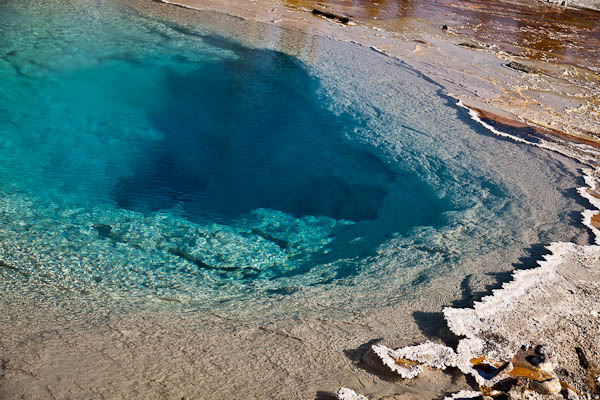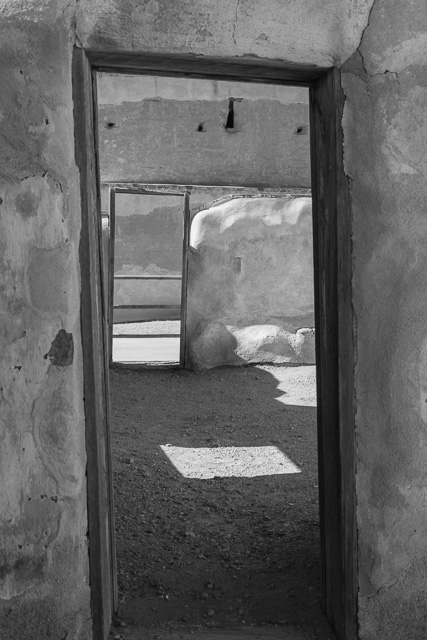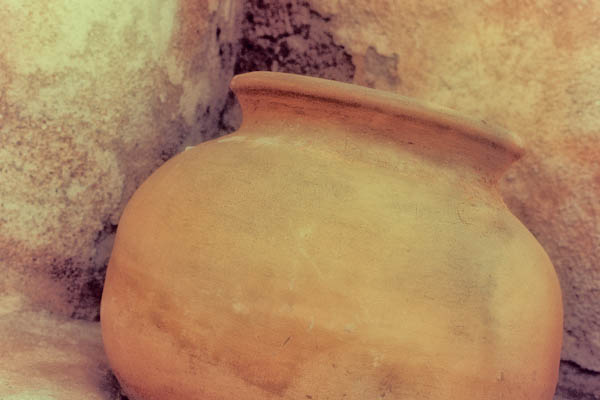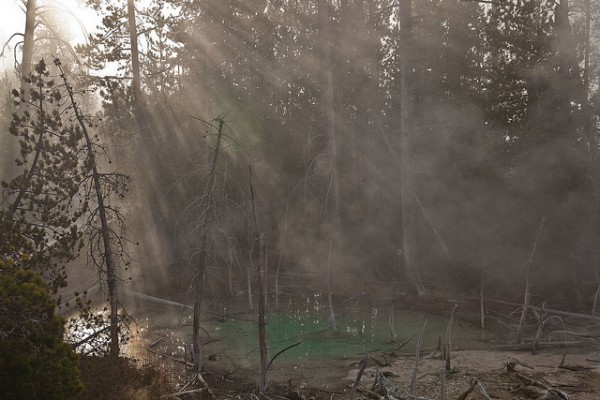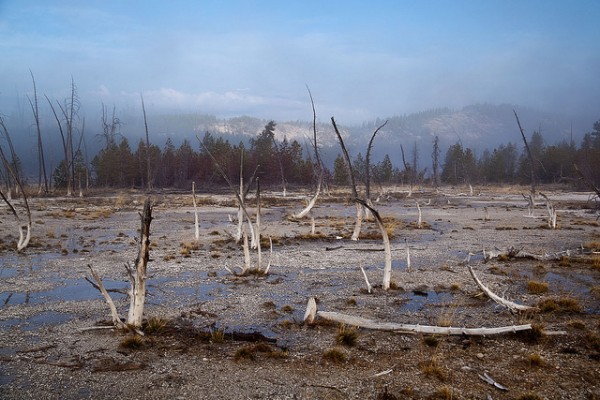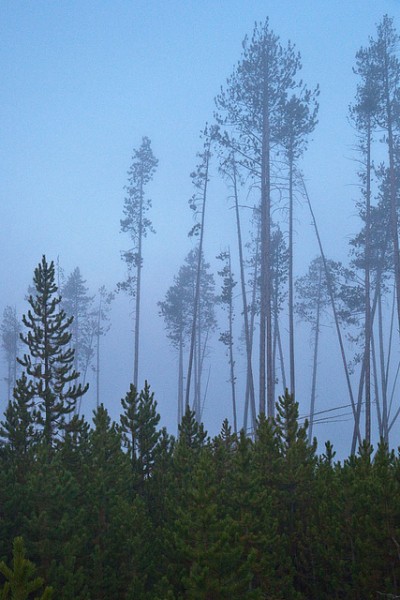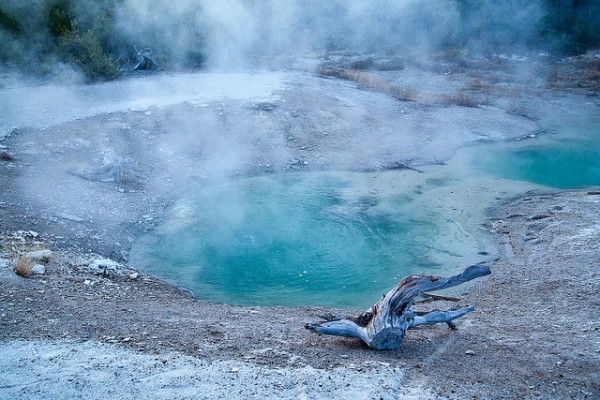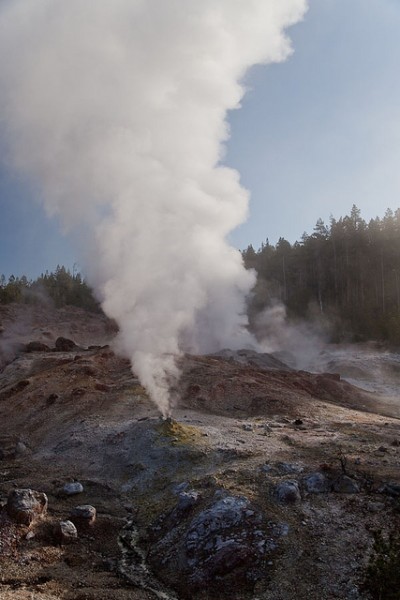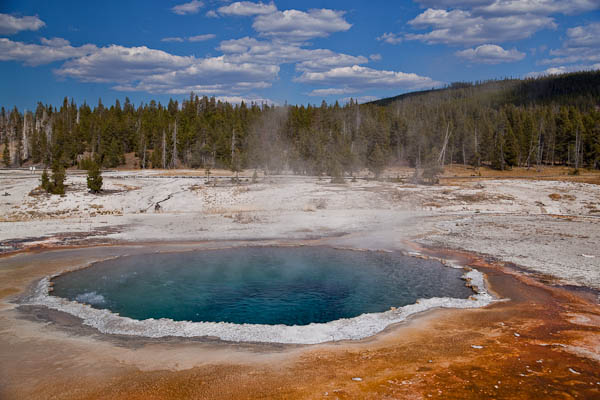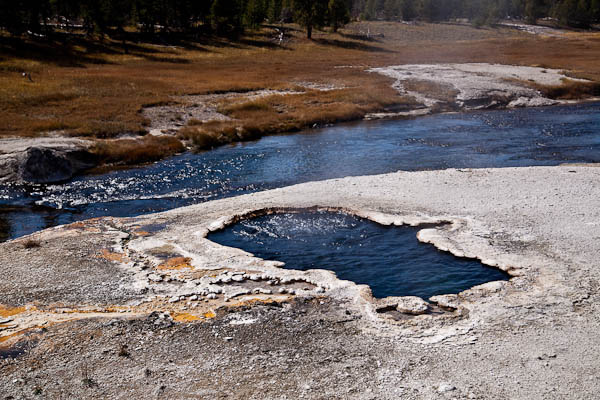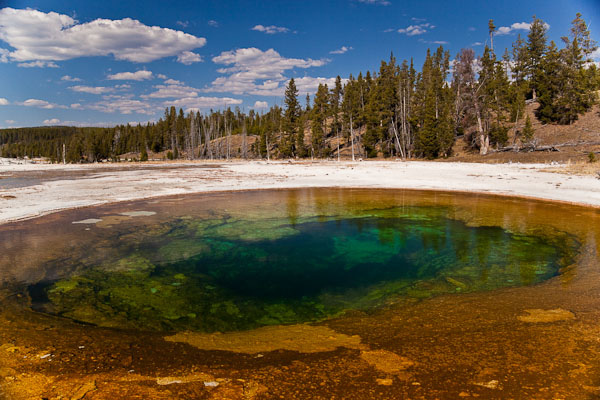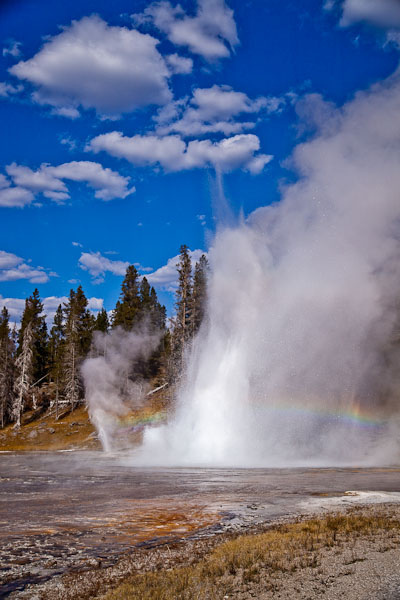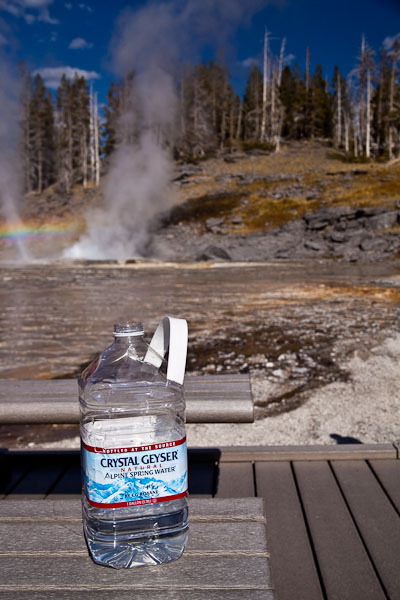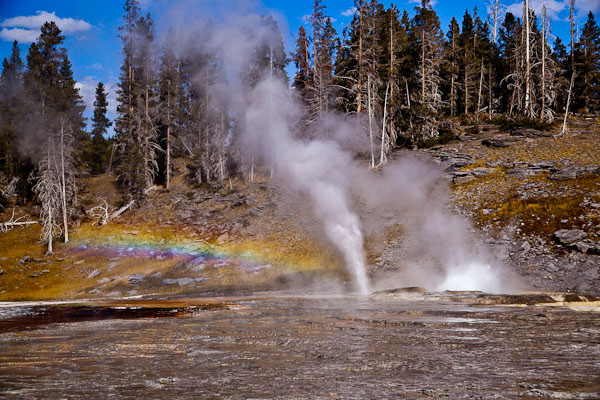E is for Enchantment and Energy.
I find I am often enchanted by the things I see in the natural world. It can be as wondrous and rare as this Yellowstone National Park’s turquoise hot springs pool or as ordinary as the pattern of bark on a backyard tree, as uplifting as a hovering hummingbird sipping nectar from a garden flower or as down-to-earth as the cracked mud along the edge of a pond during a drought.
Having a camera available encourages me to look more closely at patterns, details, the ordinary and the extra-ordinary, but now I add time for simply being in my surroundings when my schedule is open. I find an earthy spot, get comfortable, and spend time in/with the natural world.
Motionless and close the earth, I gain a tremendous amount of energy by taking the time to be still.
F is for Focus and Framework.
Focus is basic. When I take a photograph and I want it to resemble what I imagine, I pay close attention to the focus. Do I focus on only a part of the photograph or do I set the depth of field so that the entire photo is in focus? Do I need a sharp focus or a soft focus?
Focus is also one of the basics I consider when I am working on a goal, or choosing a plan of action. It helps me set a framework in which to work. It is impossible to know the body of knowledge on any subject, or at least it is for me. I am not a specialist, but a generalist. So I focus on learning a bit about many things and I don’t limit myself to a specific photographic genre or technique, to a certain style of camera or software.
I would rather explore, learn as I practice, and shoot whatever captures my interest. There is always more to learn. I will never want for a photographic subject to study or a new technique to practice.
G is for Gratitude and Gardens.
A popular phrase, one that’s even been adapted by mainstream advertising, is “It’s not the destination, it’s the journey.” I have always liked the idea behind the words – life is a journey, one that follows a long road, perhaps, winding and twisting, through cities and through deserts, scaling steep mountainsides and wandering through woodlands, walking alone, running with a crowd, even standing on the side, unable to take another step without rest or support.
Recently I read another quote about the journey, one that I also identified with. Perhaps because I spend much time in gardens of all sorts, perhaps, because I concentrate on the noticing more than the going, it is a good fit.
life is a garden,
not a roadwe enter and exit
through the same gatewandering,
where we go matters less
than what we notice.~ Bokonon
H is for History and Healing.
While I enjoy visiting sites steeped in history and reading about ancient cultures and traditions, I have learned that studying ancient cultures is one thing, but living in the past is an altogether different thing.
I can’t go back again. I can’t change what has already happened. The best I can do is learn from past mistakes, make a strong intention to not repeat those mistakes, and then live in the moment.
Healing comes, not from replaying old wounds and old stories or reliving one’s errors in judgement. Healing happens by working intently to learn from one’s mistakes and beginning each day with a fresh start, a day to be lived deeply and relished.
Part III of the 5th Annual Photo Alphabet continues with iPhonography thru Muse.
